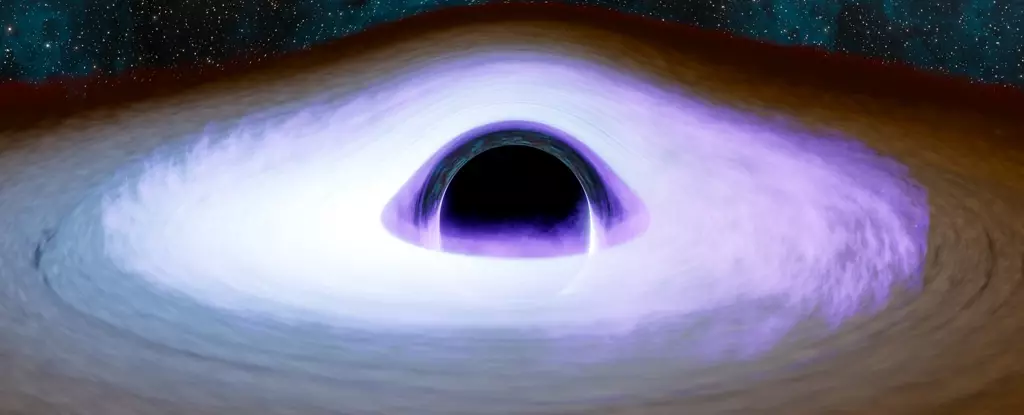Astronomical observations have long fascinated humanity, with black holes standing as some of the most mysterious objects in the universe. Despite their invisibility, their profound effects on surrounding materials make them crucial to our understanding of cosmic evolution. A recent breakthrough reported in The Astrophysical Journal sheds light on the elusive corona associated with black holes, paralleling phenomena observed in our Sun. The corona, typically recognized during solar eclipses, serves as a gateway to understanding both stellar and black hole behavior.
When witnessing a total solar eclipse, the spectacular corona reveals itself as a stunning halo of light surrounding the Moon. This hot, diffuse outer atmosphere of the Sun is impossible to ignore, even though it resides in a region that, by terrestrial standards, is a vacuum. Despite its tenuous nature, the corona emerges at temperatures soaring into the millions of degrees, allowing astronomers to glimpse its beauty. However, the corona related to black holes operates on a different scale; with temperatures reaching billions of degrees, it poses unique challenges for observation.
Understanding Black Holes and Their Structure
At the heart of active black holes lies a complex structure characterized by a donut-shaped torus of gas and dust enveloping the black hole. This configuration typically includes an accretion disk filled with heated material, rotating along the black hole’s axis. As energy from this disk fuels jets of ionized gas, shooting away from the black hole’s polar regions at speeds approaching that of light, it becomes apparent how the behavior of black holes can lead to diverse observations, notably in active galactic nuclei (AGNs). The visual representation of these powerful entities fluctuates drastically based on their orientation relative to Earth.
The intricate dynamics surrounding black holes often obscure our view of their coronas. When the orientation aligns unfavorably, the accretion disk can hide the corona, akin to how the Sun’s light is blocked during an eclipse. This creates two categories of black holes—obscured and unobscured—where the former presents challenges not only in viewing their accretion disks but also in observing their coronas. The immense temperature of the black hole’s corona allows for the emission of high-energy X-rays, which can escape into space. However, the dispersive material within the torus complicates direct observation.
A recent study employed data from NASA’s Imaging X-ray Polarimetry Explorer (IPXE) to survey a selection of obscured black holes, including notable examples like Cygnus X-1 and X-3 from our Milky Way, as well as LMG X-1 and X-3 in the Large Magellanic Cloud. By analyzing the scattered X-rays generated by these hot coronas, researchers unveiled a potentially groundbreaking insight: the structure of the corona exists as a disk that encircles the black hole, resembling the accretion disk itself—distinct from the spherical corona found around stars like the Sun.
This revelatory research helps refine our existing models of black hole dynamics, providing a clearer picture of how these cosmic phenomena engage with their environments. Understanding how black holes consume matter and propel their surrounding jets is essential for unraveling how AGNs function and evolve across galaxies. Moreover, these findings position the black hole corona as a crucial component in a broader narrative about the universe’s energetic processes.
With this recent advancement in observational techniques, astronomers are better equipped to tackle the complex enigma of black holes and their coronas. Identifying patterns among coronas enables a greater grasp of black hole mechanics and their influential role in the cosmic hierarchy. As technology improves, the veil shrouding these extraordinary phenomena will likely lift even further, paving the way for newfound knowledge that could forever alter our understanding of the universe.


Leave a Reply